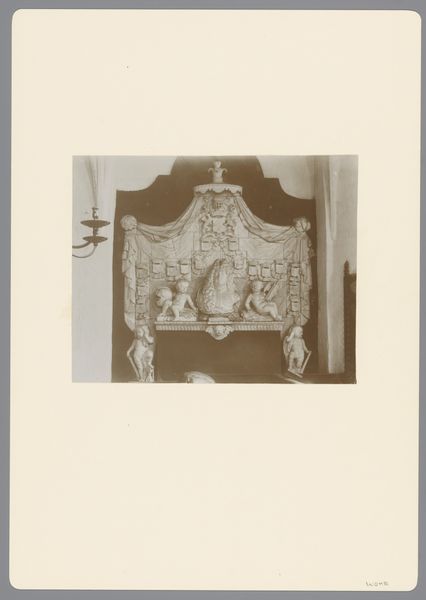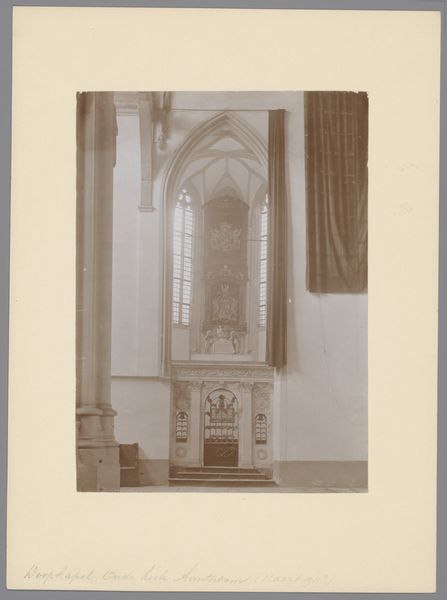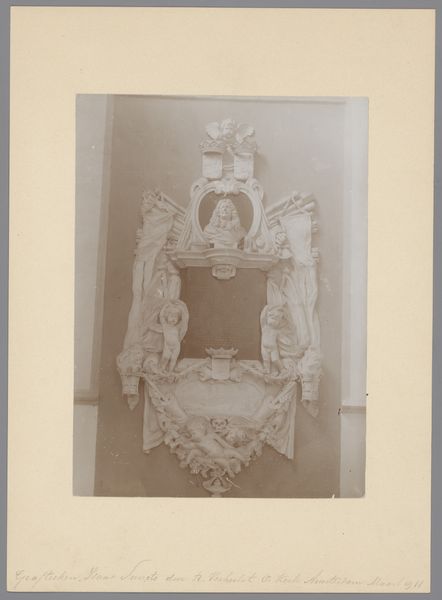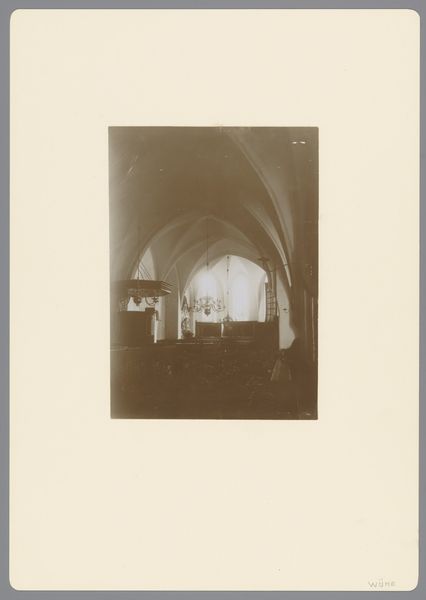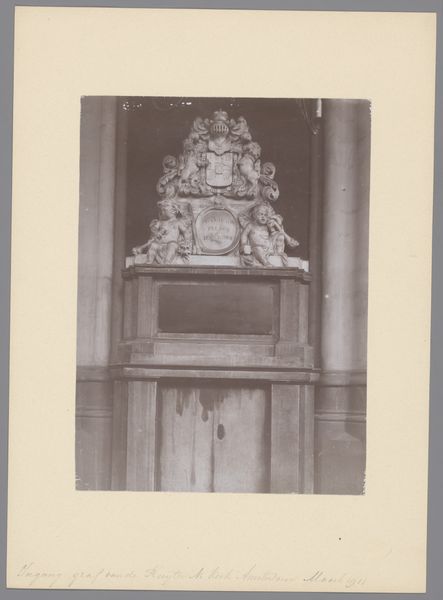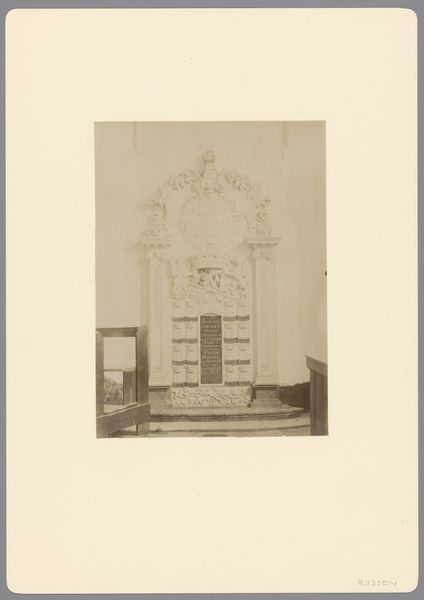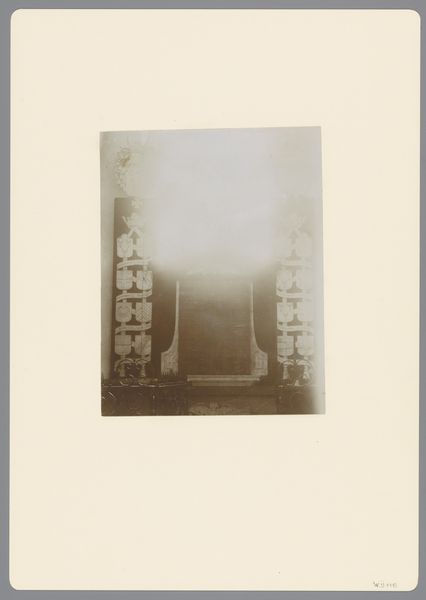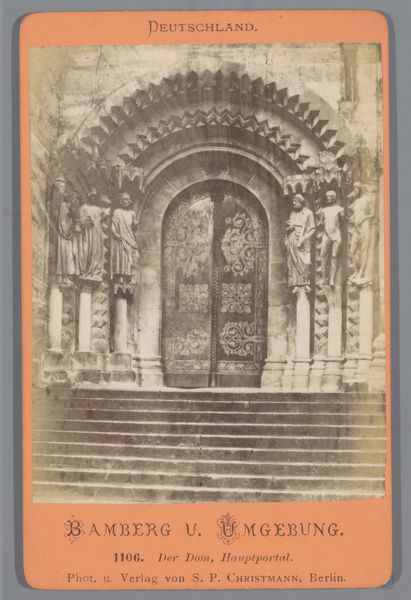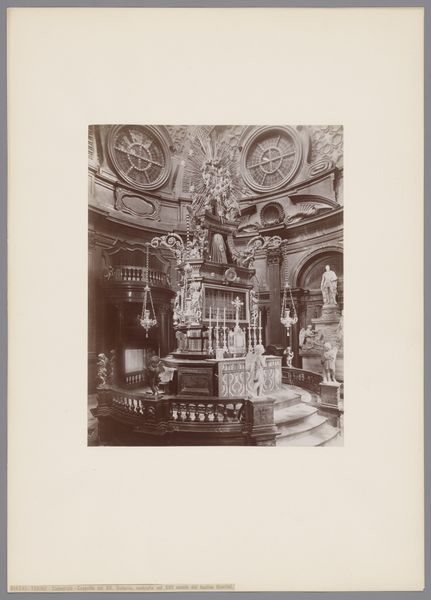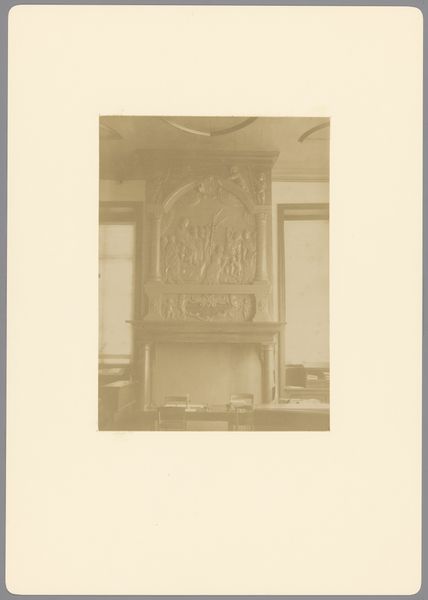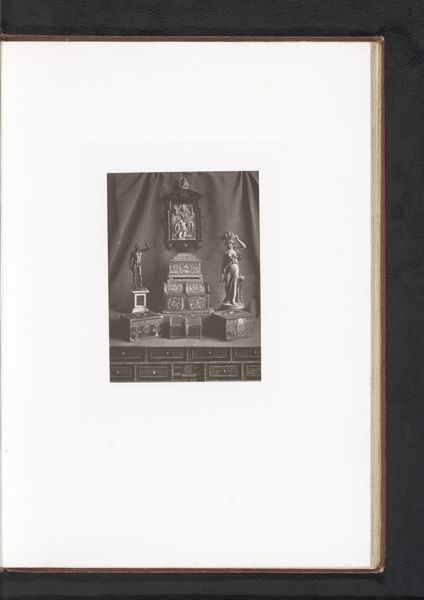
Grafmonument van Coenraad Willem van Dedem in de Nicolaaskerk te Wijhe 1911
0:00
0:00
Dimensions: height 220 mm, width 158 mm
Copyright: Rijks Museum: Open Domain
Curator: What strikes me is the overt theatricality of this sepia-toned photograph. It presents a rather imposing funerary monument. Editor: Indeed. This photograph depicts the "Grafmonument van Coenraad Willem van Dedem," a funerary monument located in the Nicolaaskerk in Wijhe, dating back to 1911. Let's unpack this. What kind of narratives do you think such commemorative projects reinforced at the time? Curator: Immediately, the social and class dynamics. The sheer scale and grandeur speaks of wealth and a desire to immortalize a specific lineage. You see those figures flanking the central, elevated form? It smacks of aristocracy, the notion of inherited privilege cemented in stone. It makes me wonder about access to such representation and visibility – who gets remembered this way and who is left out of these hallowed halls? Editor: Well, note how the composition utilizes verticality to evoke power and reverence. The sharp lines contrasted against the draped figures and allegorical symbolism creates a visual hierarchy. Curator: The symbolism of ascent is palpable. That towering arrangement directs our gaze upwards. In the church setting it would invite association with Christian values; perhaps this lineage serves society by some perceived divine right? I think about those excluded from religious institutions – and the narratives embedded in that absence. Editor: Absolutely. What you're saying resonates deeply. The contrast between the smooth planes of what appears to be marble and the ornate decorations definitely establishes an explicit focal point for our attention. It encourages viewers to contemplate themes of loss, legacy, and societal standing. How would these design elements make it feel as if it were constructed today, do you think? Curator: I suspect it might be interpreted quite differently, possibly through a lens of post-colonial critique and the reassessment of historical narratives regarding privilege, particularly given the era's societal structure. This sepia image has layers of implications embedded into the artwork which makes the viewer really wonder. Editor: Right. I now better appreciate the socio-political complexities intertwined with aesthetic and historical considerations.
Comments
No comments
Be the first to comment and join the conversation on the ultimate creative platform.
